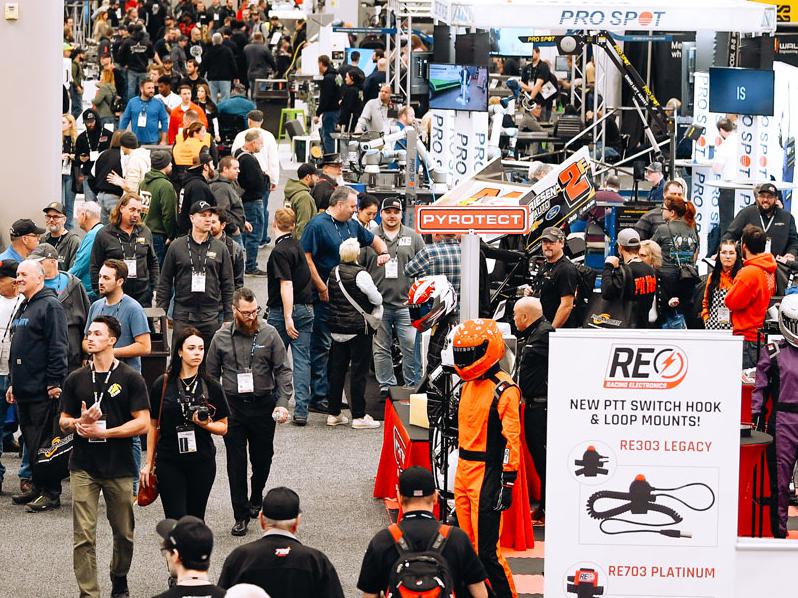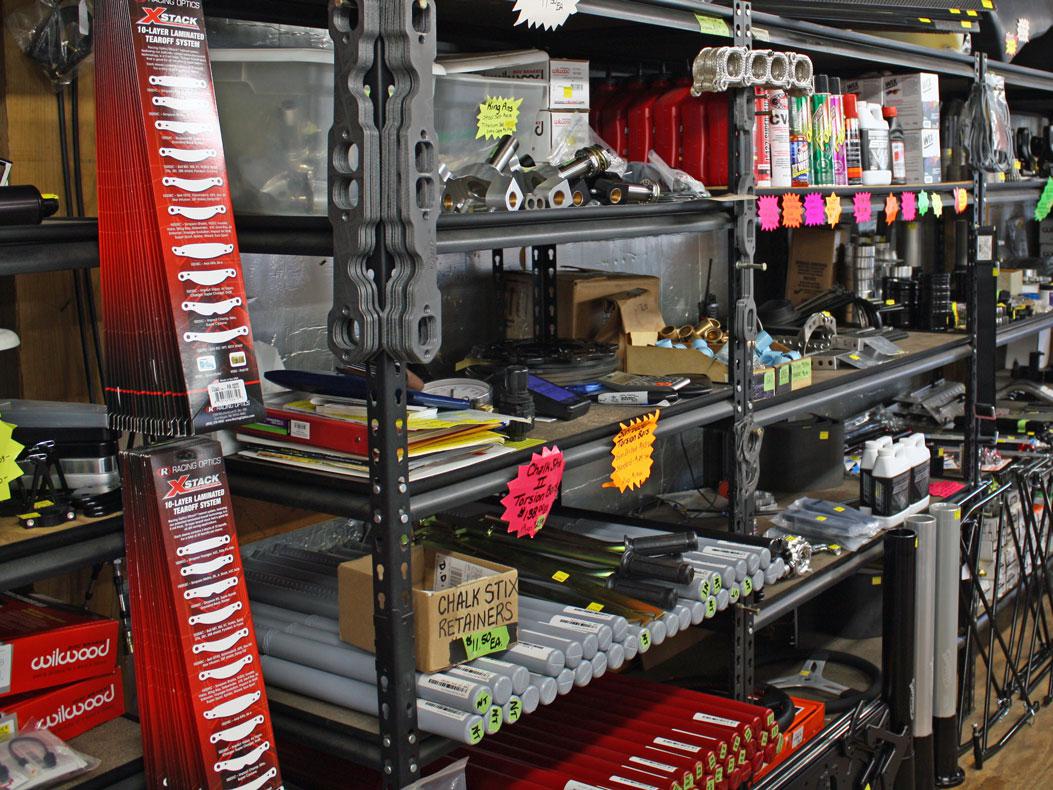Business Profile: Nesbitt Performance Engines
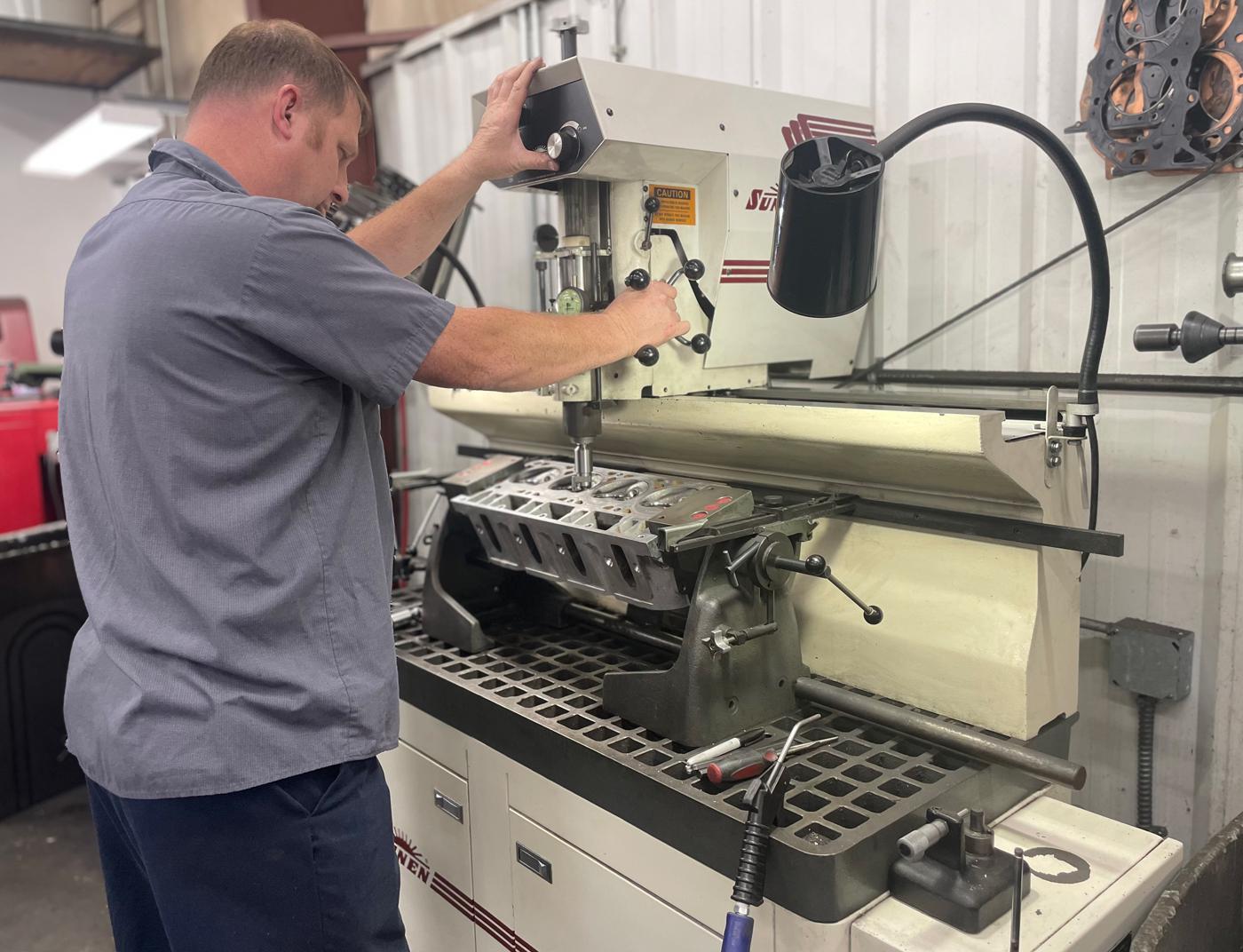
The slogan on the website says it all:“It’s about engineering and win lights.”
“If you’ve got reliability, and you’re out there winning races, that just breeds confidence. And confidence is the absolute best tool in the toolbox. If you have the confidence that you don’t have to worry about anything, and all you have to do is drive, that’s an invaluable tool. Brett adds that to my program.”
Troy Williams, a Top Dragster and bracket racer out of Virginia, has been a customer of Brett Nesbitt and the rest of the crew at Nesbitt Performance Engines in Graham, North Carolina, since 2012. During that time, Nesbitt has built “three or four” engines for him, “but they’ve maintained probably 10 or 12. Sometimes I’ll buy a car that’s a turnkey operation, and I’ll take the motor to Brett and have him go through it and get his seal of approval. I drive other people’s cars as well, and that’s part of the agreement I have with them. If we’re going to do this competitively, we have to make sure we have competitive powerplants. So we take those engines to them as well.”
How does Williams define “reliability?” “I’m putting 300 to 400 runs on an engine before I take it back for freshen-up. And I’m running it on the ragged edge.”
To Williams, what sets the Nesbitt operation apart from other engine builders is the engineering background that Brett and his father Jeff bring to the business, which they co-founded in the late 1990s. “I just think they’re on the leading edge,” Williams explained. “Brett’s a younger engine builder, so he’s always looking to do things different and maybe not be afraid to step outside the box.”
“I was a mechanical engineer with General Dynamics before I started doing this,” Brett Nesbitt explained. A long-time bracket racer, he started “tinkering around” with engines in his father’s shop “to figure out what I could come up with and then go to the track to see how it would run.”
His success earned him a reputation among his fellow racers, to the point where he was building engines for “10 to 12 customers” on the side while working at General Dynamics. When the company announced it was relocating to Minneapolis, “I didn’t want to go up to the cold,” Nesbitt said, so he opened the engine shop. “When I started, it was just me in a 50-by-40-foot building. I ran like that for about a year. Then I realized I had enough room for my machines, but I didn’t have enough room for the freshen-ups that were coming in. So I added another 50-by-60 feet and tied it into the original building.”
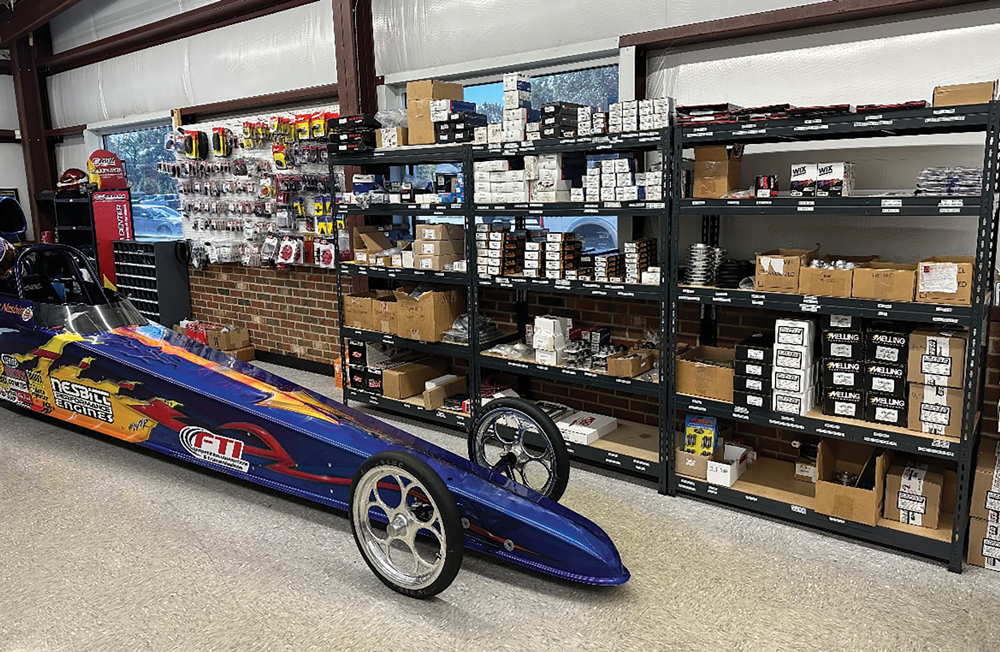
Today, Nesbitt Performance Engines operates out of a 5,400-square-foot facility. “Between all-new engines and freshen-ups, we probably do 150 to 175 engines a year,” Nesbitt said. “We do all the machine work in-house all the way to the dyno, and the engine is ready to go in the race car when they pick it up.” Nesbitt does “90%” of the block prep and operates the SuperFlow dyno; Jered Gall does the cylinder heads; John Lasseter specializes in assembly; Dalton Walker does tear-downs and cleaning up, “and he can balance crankshafts and do other operations, too;” Nesbitt’s 17-year-old stepson, Braxton Scott, “can run the seat-and-guide machine and can do a lot of the machining here; he’s a quick study”; and Nesbitt’s wife, Jennifer, “runs the front, does the books, manages the inventory, and deals with the customers when they come to pay and pick up. That’s a full-time job in itself.”
The machinery in the shop comes from Rottler, Sunnen, and Bridgeport. “We just bought that brand-new Rottler [H85-series] hone that they premiered at the PRI Show last year,” Nesbitt said. “I think there’s two of them on the East Coast. That thing is a time-saver, and it does a really good job.”
He’s considering buying another Rottler machine within the next two years to help with block prep. “With most of the heads that come in, most everybody’s running CNC programs now, so that is automated. So then you’re seat-and-guide working and assembling the heads. But you spend probably three or four times the amount of time prepping blocks and getting them where you want them, so that machine would help. The amount of time it takes to prep these brand-new blocks is a real constraint.”
Nesbitt said he’ll make the decision on the new machine “from the way the growth of the business looks, how the business is going to trend into this next year, volume-wise. Last year was the best year we’ve ever had. And this year we’re real close, within 5 to 10% of that. I don’t see it going backwards any. The industry still seems to be going strong.”
Every Shape, Form, or Fashion
Nesbitt’s specialty is “99% big block Chevrolets,” he said, “whether they’re bracket racing engines or nitrous platforms. Every shape, form, or fashion a big block Chevrolet goes, we do here, all the different cubic inches and bore spacings.” His most popular engine packages include a 632-cubic-inch, 12-degree engine that runs on race gas; a 582-inch conventional headed motor that will run on either gas or alcohol (Nesbitt calls it “a workhorse. It can run a lot of laps and it’s very low maintenance.”); a couple of different engine combinations with 20-degree heads; “and we got a 4.840 [bore space] nitrous combination that probably encompasses 90% of the new engines we build.”
Most of Nesbitt’s customers are on the East Coast, from the Northeast down to Florida, though he’s seeing growth in sales from the Midwest and as far west as Washington state. He’s even shipped engines overseas, including to Qatar. “We ship everywhere.”
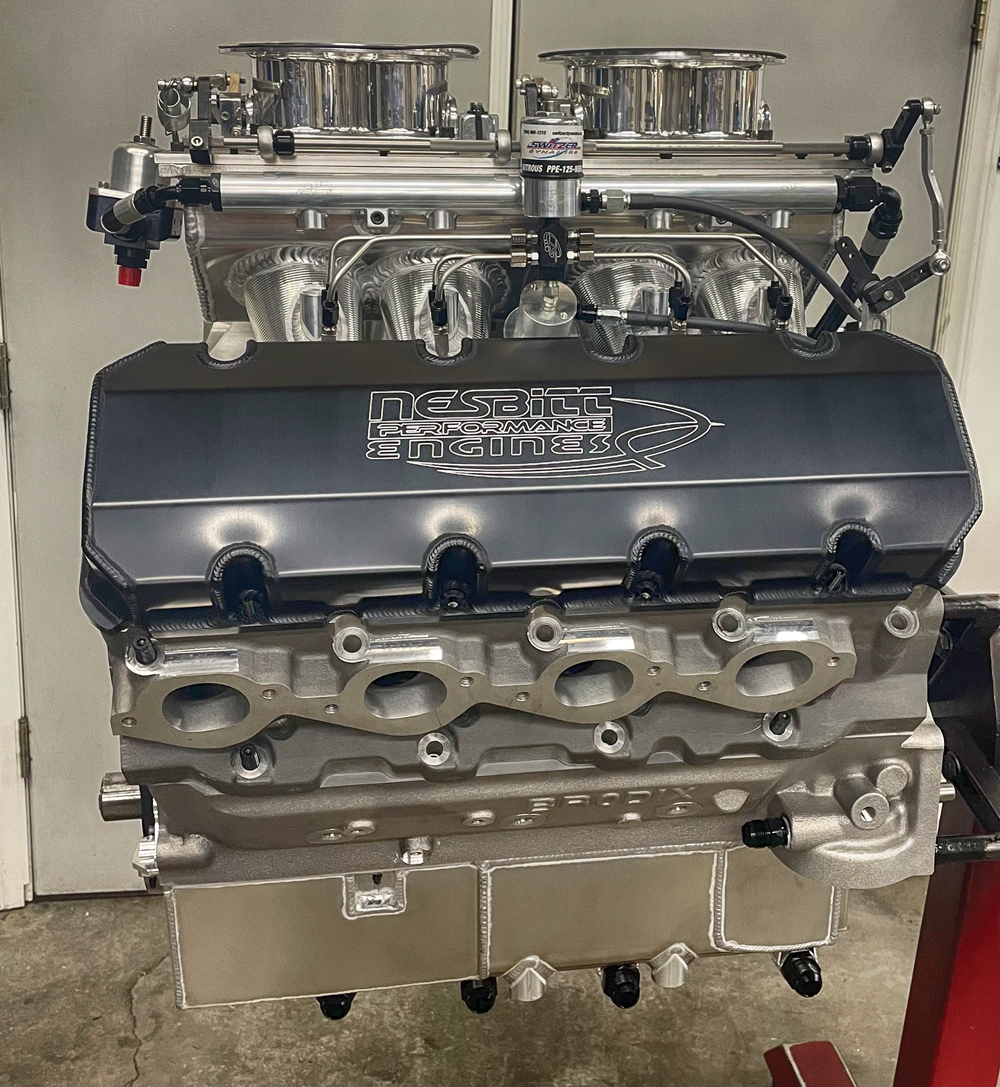
When asked what he thinks sets his shop apart from other engine builders, Nesbitt said, “It’s the quality of the machine work and the performance numbers we get out of them.” He chooses parts, from vendors that include Brodix, Dart, and Advanced Product Design, among others, “strictly on quality. I’m not as much about cost.
“There are certain components at a certain power level that are capable of handling the workload, but when you get up to the higher horsepower motors, you need to go to a different tier of quality. For the top-end motors we get, all they get are the top-end parts I know of. I don’t want to put a sub-par part in it because that one part can compromise the whole combination. If I have a product or a combination that’s out there working, I don’t like to deviate from it—as far as the part. We might mess with machining operations to try to get more power, but component-wise, if I have something out there that’s making a lot of laps and not giving any trouble, I’m not going to change it. Even if I have to wait to get that part, I’ll wait.”
And sometimes Nesbitt has to. His lead time to build an engine is “100% parts-availability-driven right now. I try to keep in stock stuff that I know we run in larger volumes, like the parts for the really popular bracket motors that we sell. But if I run out of parts and I can’t keep the pipeline full…I mean, just the lead times on blocks right now is 12 to 14 weeks.
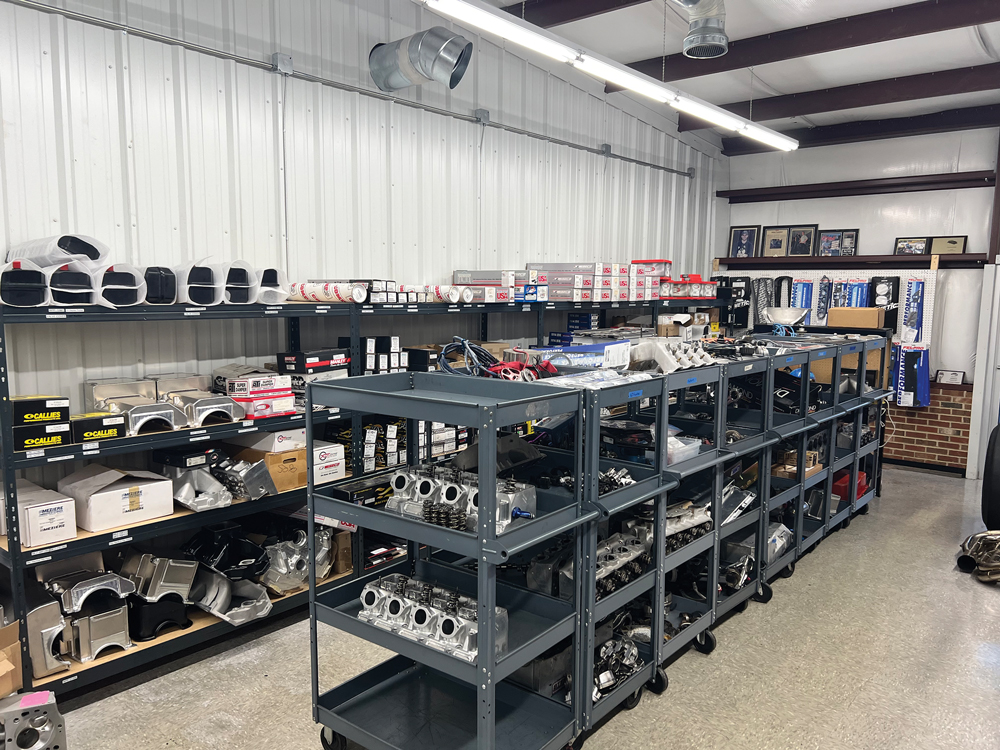
“If I’ve run out of a particular part for the combination somebody’s looking for, and you tell them it’s 15 or 16 weeks, it seems like in this industry, if they have the money in their hand, they have to spend it,” Nesbitt continued. “So you’ve got to stay ahead of the parts. That’s one thing we’ve done in the last two years. Since Jen’s been here, we have kept a whole lot more inventory. We’ve done that since the pandemic, because you have to be able to provide the service in a timely manner.”
He Shows Up
Troy Williams and Michael Paschal, another Nesbitt customer, cited the shop’s high level of service as a big reason they keep coming back.
For Paschal, a Top ET bracket racer from Greensboro, North Carolina, Piedmont Dragway in Julian “is about 15 minutes away in my backyard. Nesbitt’s shop is, I guess, a good 40 minutes probably for me, but it would take Brett probably 30 minutes to get to the track. There have been several times that I would be at the track on a Friday evening testing, and I would call them and say, ‘Hey, I need help changing this, changing that,’ and the next thing I know, here he is showing up in nice clothes, work clothes, it doesn’t matter, he shows up. He’ll give you a hand. That’s just how all of those guys are over there at their shop.”
“Two years ago, we just freshened up the engine, and I put it in the car and took it out for the first weekend,” Williams recalled. “It had a noise that I just couldn’t find. I called Brett at 1:00 on a Saturday and told him I had this noise. He said, ‘Check this, check this, check this.’ I checked everything. I called him back, and he told me to put the car in the trailer and meet him at his shop. I was racing in Virginia Motorsports Park, which is about two-and-a half hours from Brett’s shop. I said, ‘Brett, it’s 1:00 on Saturday.’ He said, ‘I didn’t ask you what time or what day it was. I told you to put the car in the trailer and meet me at the shop.’ So on a Saturday at 3:30–4:00 I roll into his shop. It’s him and one of his head guys, Jered. They instantly diagnose the engine, found that it had a bad lifter in it, a brand-new bad lifter. Fixed it by 6:00. I’m back on the road headed back to VMP. That’s the kind of service he gives you.”
Service and performance. “I have a true conventional 24-degree headed 632 in my car right now,” Williams explained. “We just qualified it at a PDRA event with a 4.38. It has no power adders. It’s 100% horsepower with conventional heads.”
Paschal’s engine is a “632 Headhunter motor on alcohol. My best ET with it so far is a 4.43. Being on alcohol and a conventional head motor, that’s really stout. You typically don’t see alcohol motors going 4.40 anything. So a lot of people were very, very impressed with it, seeing how fast it is and just how consistent it is. This is my first year with it, and it has taken me to 11 finals this year,” he said.
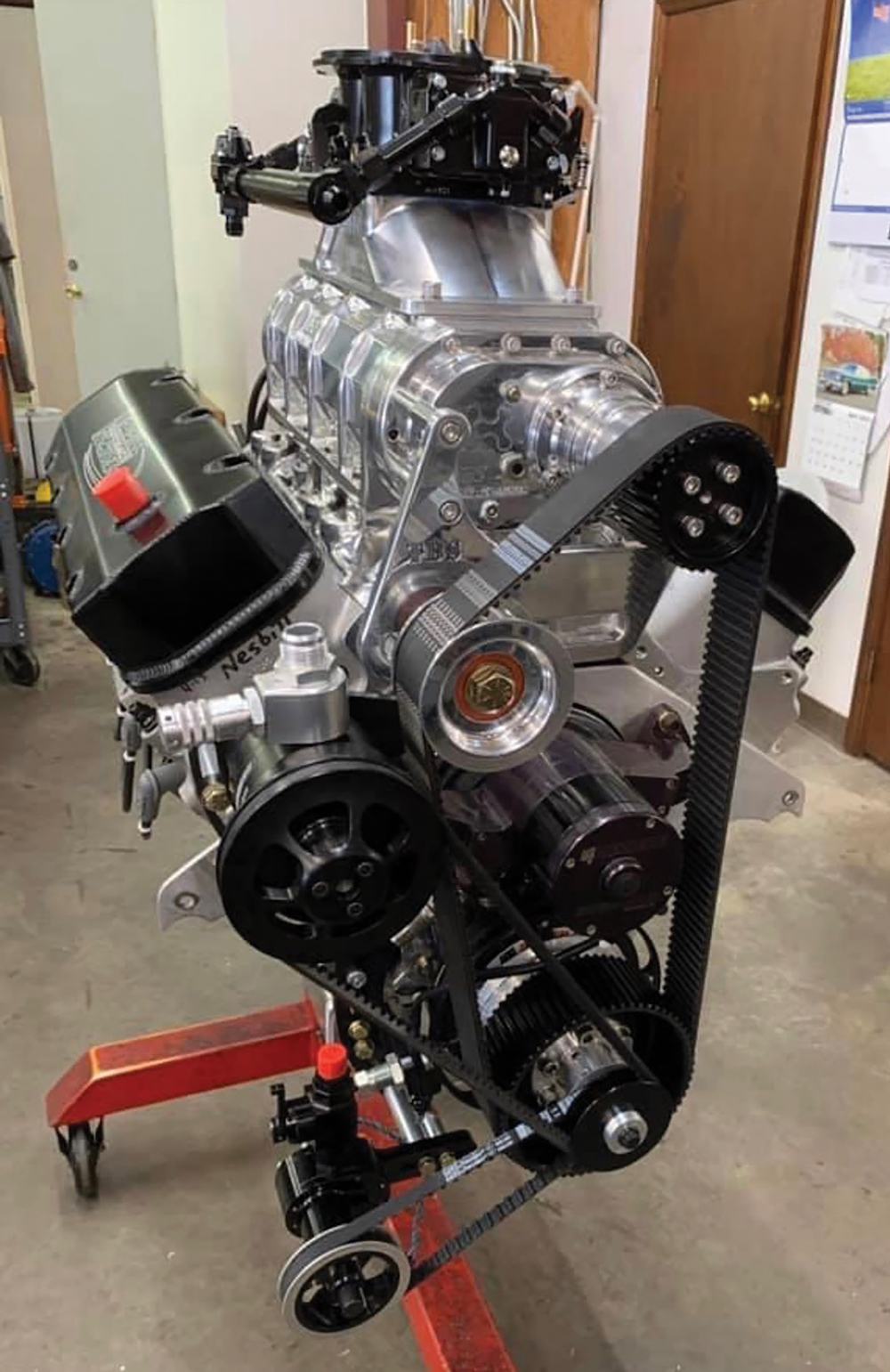
Paschal recently raced at the Fall Fling event in Bristol, Tennessee, and said after the first day of racing “the race promoter came up to me and said, ‘Man, we pulled your sheets from all your passes today, and we have never in our lives seen a car, or a setup, that consistent.’ People couldn’t believe it. I posted my slips on the Internet, and people were just blown away with how consistent this thing was. It was like a copy machine, like the same run over and over and over. Those guys, they do really, really good work. You couldn’t ask for any better,” he concluded.
 MEMBERSHIP LOGIN
MEMBERSHIP LOGIN JOIN PRI
JOIN PRI

